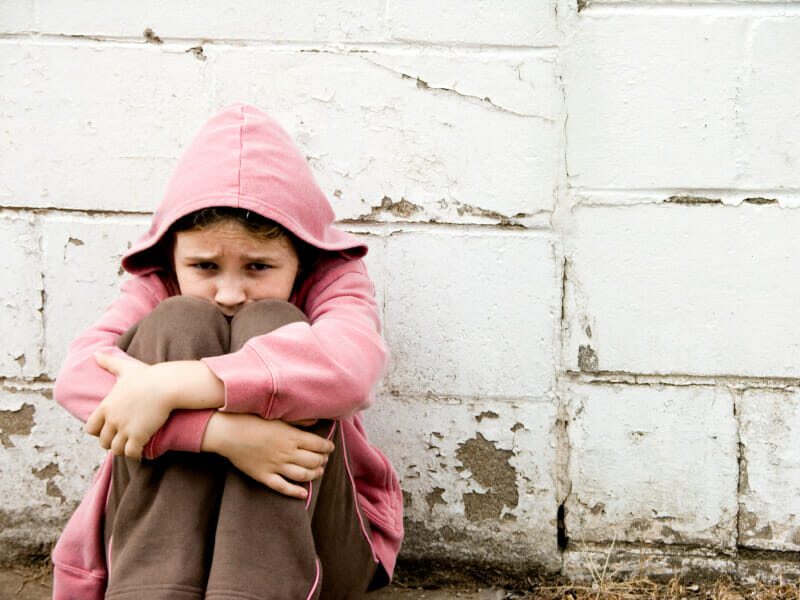Child Abuse Prevention: Emotional Abuse Defined

Emotional, or psychological, abuse is the most often misunderstood form of trauma. It is defined as a constant attack of an adult on a child through negative comments or behaviors. Thomas J. Henry discusses child emotional abuse and its effects.
What is Child Emotional Abuse?
The emotional abuse of children has been difficult to define, but many states agree that emotional abuse includes:
- Isolating – a caregiver cuts the child off from normal social experiences, such as making friendships, and makes the child feel alone in the world.
- Rejecting – a caregiver refuses to acknowledge a child’s worth and needs.
- Terrorizing – a caregiver creates a climate of fear, bullies and frightens the child, and makes the child believe that the world is hostile.
- Verbally Assaulting – a caregiver humiliates the child with repeated name-calling, harsh threats, and sarcasm that diminish the child’s self-esteem.
- Overly pressuring – a caregiver imposes extreme pressure upon the child to behave and achieve in ways that are far beyond the child’s capabilities.
- Ignoring – a caregiver refuses to respond to a child or to give him or her needed attention.
- Corrupting – a caregiver encourages the child to misbehave or act destructively.
The Effects of Emotional Abuse
A child who is constantly receiving negative messages or responses from adults will experience erratic behavioral changes, stunted development, and poor self-worth.
The effects of child emotional abuse may even be further reaching. Studies on abandoned and severely maltreated Romanian children revealed striking lesions in certain areas of the brain. The repeated traumatization led to an increased release of stress hormones, which attacked the sensitive tissue of the brain and destroyed newly formed neurons.
These bodily reactions show that emotional maltreatment can be just as severe to the human body as physical injury, but what makes emotional abuse even more of a challenge to identify is how easily it can be hidden. Emotional abuse leaves injuries on the inside, where it may remain unseen until it begins to affect a child’s behavior. To identify emotional abusers, people must watch a child’s behavior and listen to the child’s complaints.
National Child Emotional Abuse Statistics
The following information was compiled by Darlene Barriere in her article “Emotional Child Abuse.”
- In a Canadian study of 135,000 investigations by child welfare agencies over a three month period, 60% were emotional maltreatment and neglect, while 10% were for sexual abuse, and 31% for physical harm severe enough to require treatment (Health Canada, 2001).
- Of the statistics available, and depending on the definition adopted, estimates of the prevalence of “psychological maltreatment” vary from between 1 to 26% of children (Fortin & Chamberland, 1995).
- In a 1997 U.S. study, emotional maltreatment was reported in 15% of 817,665 or in 122,650 cases across 43 states (National Center of Child Abuse and Neglect, 1997).
- Emotional child abuse accounts for approximately 7% of all reported cases of child maltreatment across the United States. However, the absence of operational definitions and true standards of severity means that the true occurrence of the extent of emotional child abuse is unknown (National Research Council, 1993).
- The most recent national Australian emotional abuse statistics, produced by the Australian Institute of Health and Welfare, indicate that in 1995-96, emotional abuse cases accounted for 31% of substantiated child maltreatment cases (Broadbent & Bentley, 19978).
- In 1996, 15% of all registrations of maltreatment in England were for psychological maltreatment (Doyle, 1997).
- In one emotional abuse statistics survey in Ontario, 40.8% of adolescent respondents had experienced emotional abuse (Manion & Wilson, 1995, pp.13-141).
- In a study of 1,000 women 15 years of age or older, 36% had experienced emotional abuse while growing up; 43% had experienced some form of abuse as children or adolescents; 39% reported experiencing emotional abuse in a relationship in the past five years (Women’s College Hospital, 1995).
- The estimated number of emotionally neglected children more than doubled to 1,173,800 in the time between 1993 and 2005-2006, a 101% increase in number, an 83% increase in the rate. (National Incidence Study of Child Abuse and Neglect 2009-2010).
Contact an Experienced Child Abuse Attorney
If you believe that your child has been the victim of psychological or emotional abuse, contact Thomas J. Henry. For over two decades, Thomas J. Henry has been an advocate for psychologically abused children across the state of Texas. Our experienced child injury lawyers are available 24/7, nights and weekends to take your call. Contact us today for a free case review.

